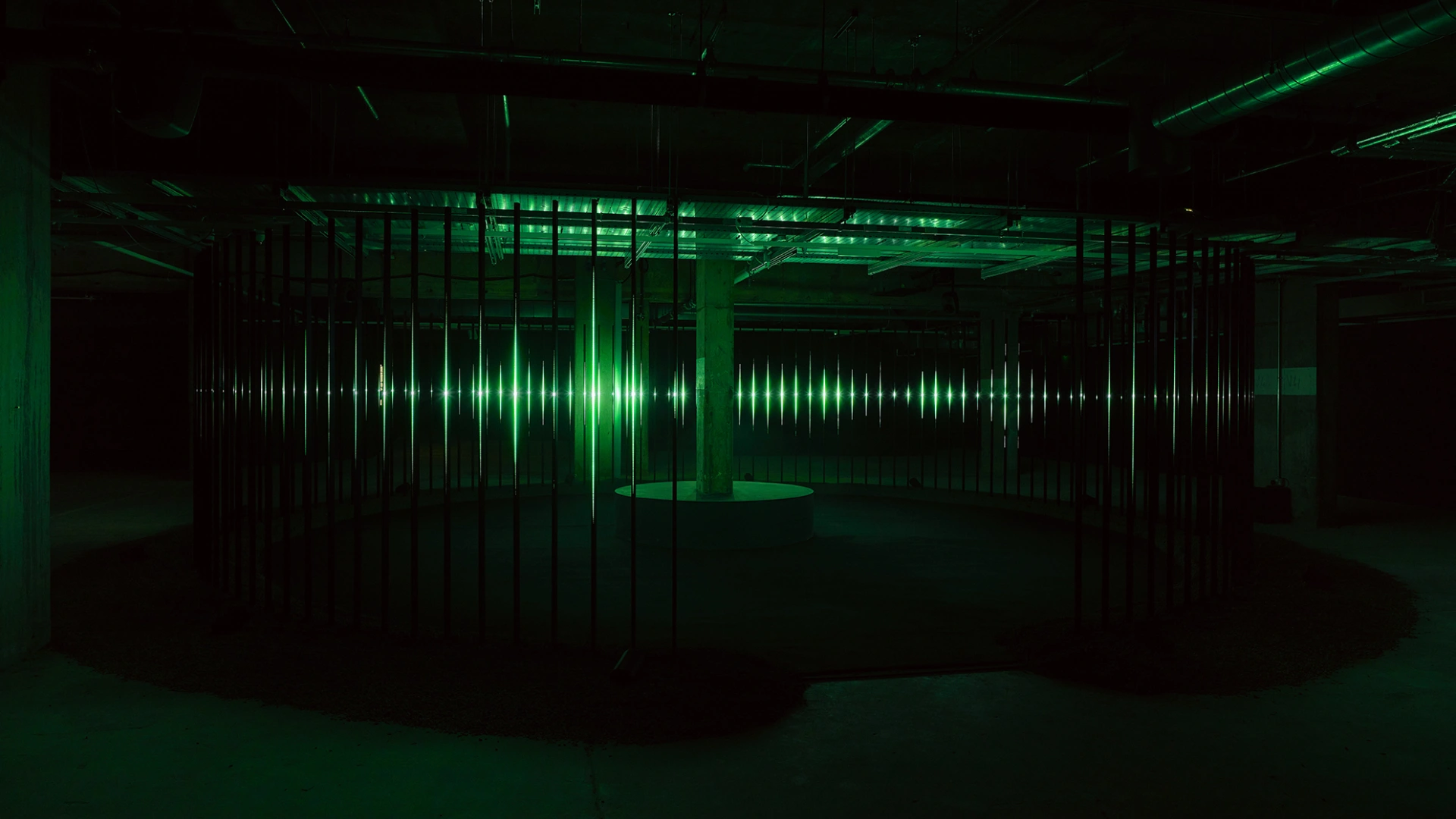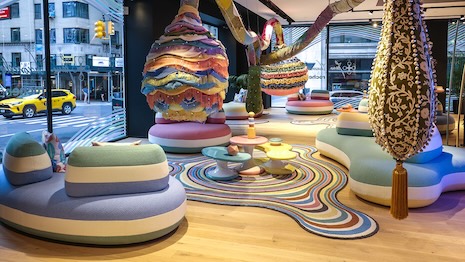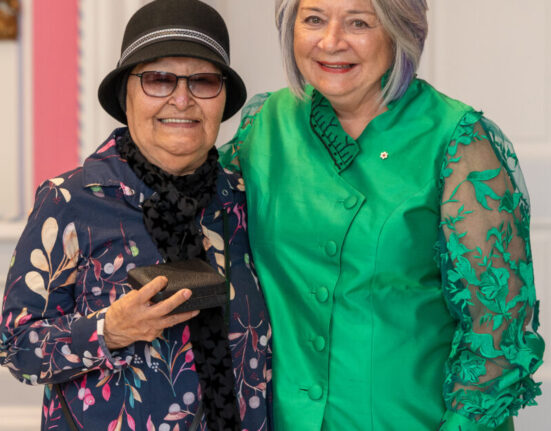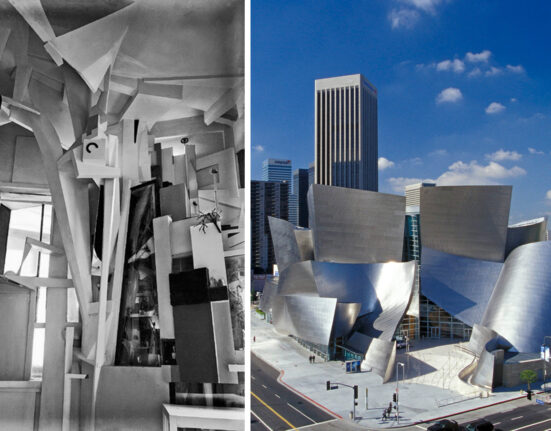UVA’s Matt Clark on the new works inside the expansive new exhibition at 180 Studios, Synchronicity.
London-based collective United Visual Artists (UVA) has helped define a generation of media artists working with light, space, sound, and code. Under the guidance of artist Matt Clark, UVA’s multimedia practice investigates the nature of perception and cognition, reflecting on the ways we attempt to understand and make sense of the world. Commissioned and produced by 180 Studios at 180 The Strand, Synchronicity is the studio’s largest survey exhibition to date and highlights their ongoing interest in the role of pattern recognition in meaning making and the human impulse to find structure and order in an otherwise chaotic universe.
While UVA are best known for their large-scale installations and architectural interventions, music has played a pivotal role in the studio’s work since its founding. Every work in Synchronicity deals with music in some way—as a way of structuring time (Our Time, 2016), as a way of relating to our environment (Polyphony) and technology (Ensemble), as a perceptual phenomena (Chromatic), and as one of the original means for making sense of the universe (Musica Universalis, 2016).
John Cage referred to music as “organised sound.” We hear the patterned world unfolding all around us – in the rhythmic fall of feet walking down a flight of steps, in the rustling of leaves, in the call of birdsong. Sound prefigures the visual and is our first contact with the world from inside the womb. It stirs something deep within us, a resonance that is felt deep in our bones.
In this interview with UVA’s founder, Matt Clark, – an extract from a longer feature which will be published in the forthcoming A/W 2023 issue of Fact’s print magazine – we delve into how music and sound have shaped UVA’s visual practice. The printed version of the feature includes exclusive images created by UVA’s new work, Chromatic, a computationally programmed, rule-based system that endlessly generates compositions by assembling and reassembling the elements of form, colour, and sound into new abstract formations and harmonic sequences.
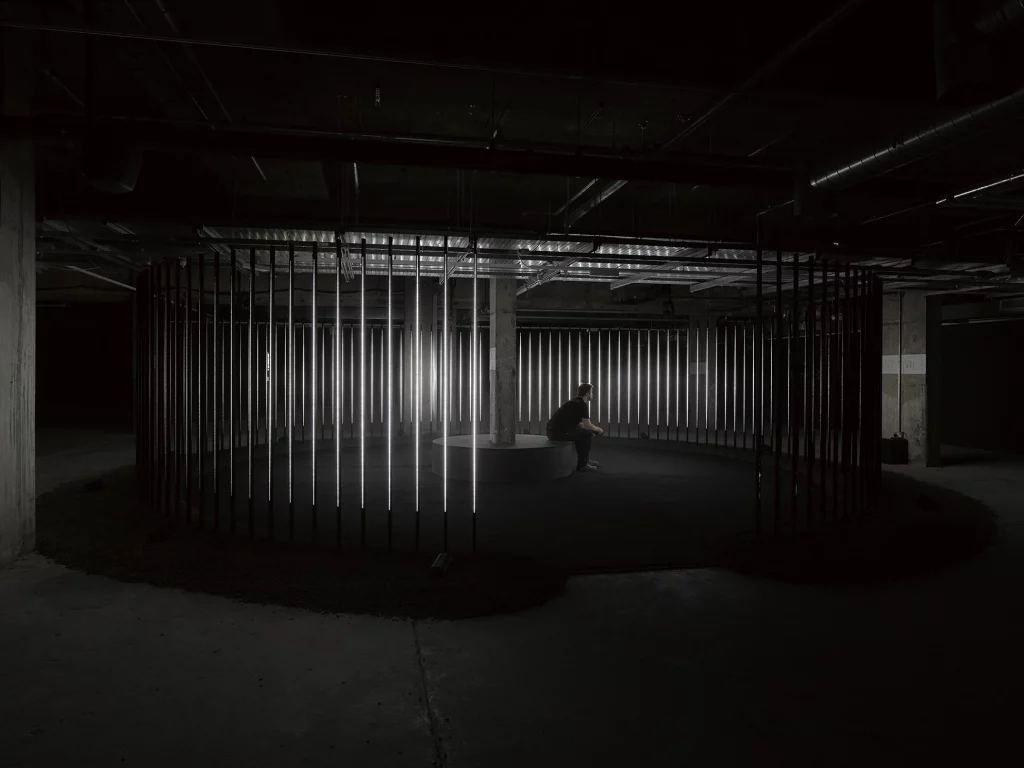
Julia Kaganskiy: This exhibition contains several new works — Polyphony and Ensemble — that consider our relationship to music on a fundamental, species level. They are inspired by different theories about the origins of music in human culture, ideas emerging from cognitive science and anthropology that try to explain how and why we might have started to make music in the first place, the role that music plays in our lives, and in the way we relate to our bodies and environment. Can you tell us more about the research that inspired these works?
Matt Clark: One of the appealing aspects of collaborating with specialists who work in disciplines outside our practice is that we can dive deep into their field of work. While there are hurdles to overcome, collaborating with people who’ve dedicated years to refining their ideas and methods to reach the pinnacle of their fields is both a privilege and an education. Both works raise questions related to the origins of music and how we might have evolved to feel the need to make it. Polyphony is our second collaboration with the bioacoustician Bernie Krause, with whom we created the Great Animal Orchestra in 2016. While that initial project centered solely around the natural sounds of animal habitats, in Polyphony, we are introducing human-made sounds to highlight the human-nature relationship.
This new work is inspired by a trip where I spent time with Bernie at his house in Sonoma earlier this year. I was interested in learning more about how nature’s rhythms have influenced how we have evolved to make music, and I wanted to know more about the specifics of Bernie’s observations. He introduced me to the work of the late Louis Sarno, a music researcher and preservationist from New Jersey, who uprooted his life to live with the Bayaka tribe in and around the Central African Republic. The Bayaka have a unique and complex musical culture that permeates almost every aspect of living and surviving in the forest. Their music is passed on through generations, dates back thousands of years, and is possibly the root of all human music. Bernie was a friend of Louis and joined him on expeditions and gave him recording devices, as did Brian Eno, and as a result, Bernie has all of these incredible recordings in his archive.
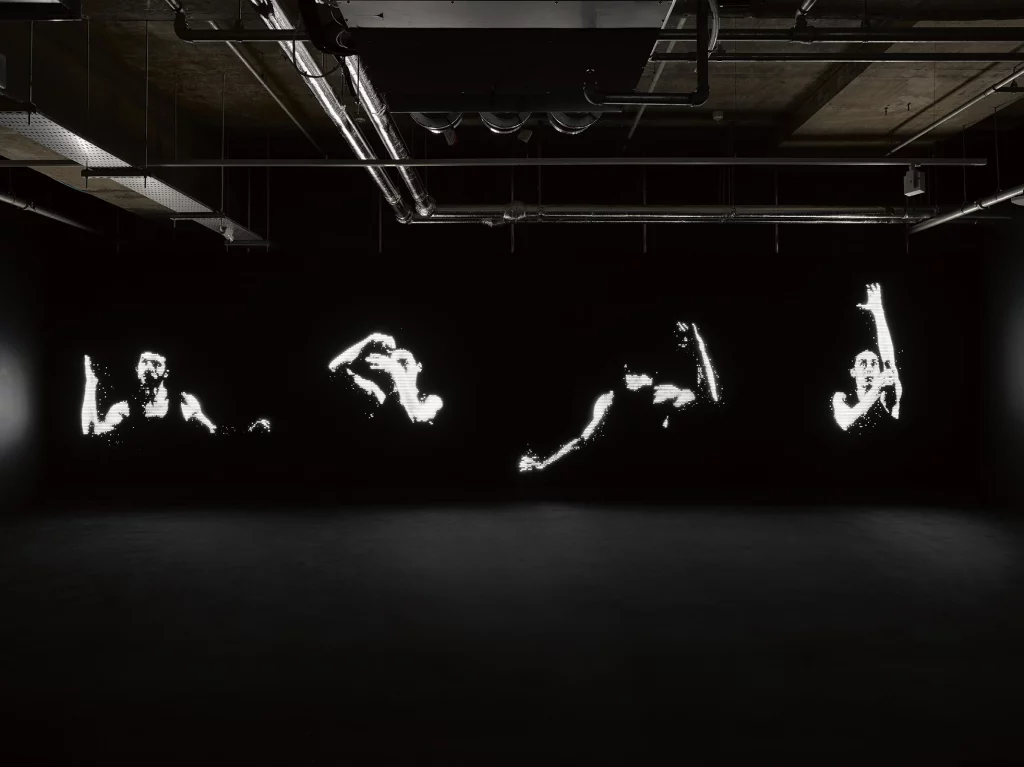
The music of the Bayaka is entirely in sync with their surroundings. The subtle pulses, polyrhythms of chorusing insects and frogs, and the counterpoint interplay of birds act as the backing track to Bayaka music. Their music is clearly an improvisation of their natural surroundings. However, there was another observation when looking at Bernie’s spectrograms; many of the recordings had an unusual mark across them, often when a plane was flying overhead. Even thousands of feet above, the noise would silence the natural habitat; it was noise pollution. The habitat would soon come back to life when the aircraft left the audible range. It’s the sort of thing only apparent when you can see the sound through Bernie’s spectrograms. Through a combination of Louis’s and Bernie’s recordings, we have reconstructed sonic environments that help express these stories. Hopefully, Polyphony highlights the potential of coexisting with the natural world and how our modern lives can unexpectedly disrupt it.
Ensemble looks inward; it studies the human body as an instrument. The theory of theoretical neurobiologist Mark Changizi inspires its origins. We worked with Mark on an exhibition at the Museum of Old and New Art in Tasmania a few years ago, where we created an interactive installation that translated the body’s movements into sounds that suggested a kind of music. His writings theorise that the body’s various anatomical components produce rhythmic patterns, vibrations, and resonances that, when harnessed and understood, reveal the body’s capacity to generate music-like experiences. With this idea, we worked with a longtime collaborator, choreographer Dana Gingras, and musician Roger Tellier-Craig, to create a new installation that is inspired by motion studies. The narrative reflects on how the development of new technology may have influenced how we move our bodies. It spans hunter-gatherer activities through to how we interact with our mobile phones and other digital devices.

JK: You often refer to UVA’s kinetic sculptures as “spatial instruments,” which alludes to the way they conduct light and sound through an environment, essentially playing the architecture, like in the works Our Time and Musica Universalis. For this exhibition, you created a different kind of instrument, Chromatic, which is an audiovisual installation that explores the connection between sound frequencies and colour frequencies. What does being able to manipulate light and sound through these custom instruments allow you to reveal?
MC: Chromatic is part art installation and part musical performance inspired by the phenomenon of chromeosthesis, a type of synesthesia where, for some individuals, sound involuntarily evokes an experience of colour, shape, and movement. Unlike works such as Our Time and Musica Universalis, where three-dimensional physical objects dictate the sound and visual experience as they move through space, this new work utilises a large LED screen that suggests a virtual space using the vanishing point to construct the illusion of depth. The artwork is very minimalistic in its presentation, and aesthetically, it’s an homage to modernist painters from the twentieth century, whom I have always loved. Under the hood is a complex software that allows Daniel Junior Thibaut, our composer, to play the installation like a visual instrument. There are many parameters and rules that connect notes, velocity, and geometries in ways that produce unlikely and sometimes surprising combinations.
The idea for the installation draws inspiration from how our cognitive mechanisms frequently intertwine our senses. Throughout history, visual artists, musical composers, and scientists have drawn parallels between colour and sound. It’s a well-explored field but something we wanted to explore further. These connections have primarily taken on a subjective nature rather than being rooted in pure scientific understanding. Nevertheless, Isaac Newton was one of the pioneers in establishing a scientific correlation. He proposed that the hues found within the light spectrum are in harmony with tonal intervals, drawing an analogy between wavelength and frequency. Then there were also Kadinsky, Rothko, and Mondrian—all painters that reportedly experienced colours when they listened to music. There was also a Russian composer and pianist named Alexander Scriabin who, in the early 1900s, invented the first colour keyboard and notation for colours based on his synesthetic scale.
Chromatic is the most musical work in the show in the traditional sense. Still, one of the things I’m excited about in the exhibition is that every piece is unique. It’s like a series of performances that interconnect with each other thematically. Hopefully, it will leave people feeling highly stimulated by their thoughts and emotions.
This feature will be published in full as part of Fact’s A/W 2023 issue, which will be available soon. You can buy back issues here.

UVA: Synchronicity
180 Studios
180 The Strand, London, WC2R 1EA
12 October, 2023 – 17 March, 2024
10am – 7pm, Wednesday – Sunday (closed Mondays and Tuesdays)
For ticket sales visit: https://www.180studios.com
Featured image: Chromatic, 2023 © UVA
Read next: Interview: Es Devlin

